Sauger and walleye are often confused because they look nearly identical to an untrained eye. Whether you’re a beginner angler or an expert who’s just not familiar with these fish, you’ve likely mixed them with one another. The good news is you’re about to learn all of the physical differences between these popular sport fish.
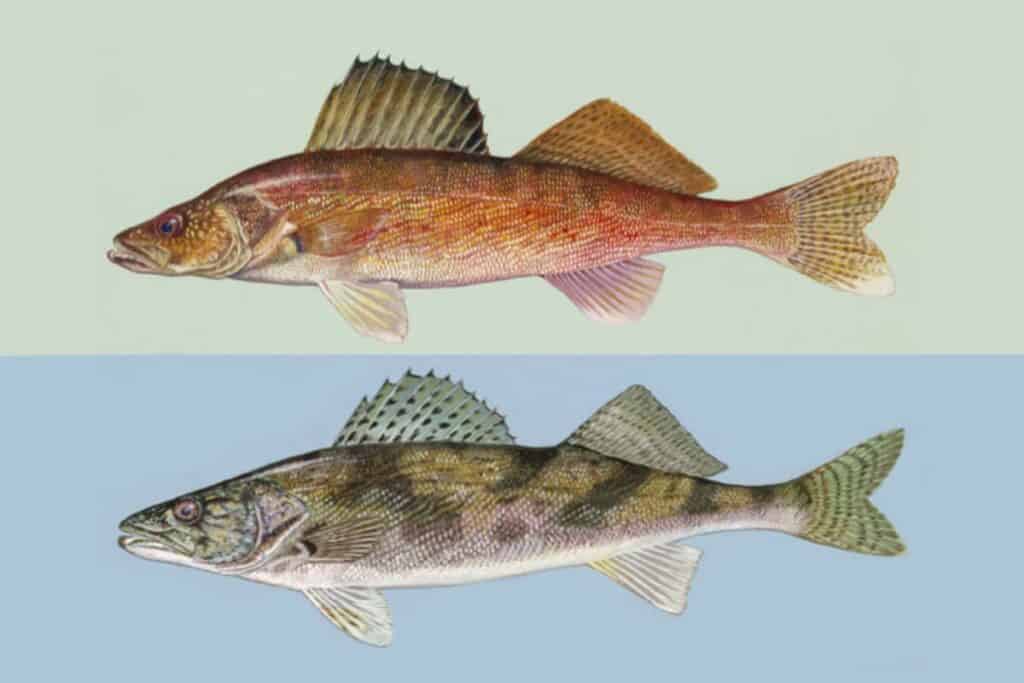
Table of Contents
What is the difference in Sauger vs Walleye?
The primary differences between sauger vs walleye are a black splotch on the walleye’s dorsal fin compared to a black-specked dorsal fin on the sauger, gradual transparency on a walleye’s tail fin, and the solid color of a walleye vs a spotted pattern on a sauger. Walleyes also grow larger than saugers.
This article will also teach you the following details about the differences between a walleye and a sauger:
- Taste differences and how you should season either fish.
- Sizes differences to know which fish you’ve caught.
- Information to help you know more about walleye and sauger.
What Is a Walleye?
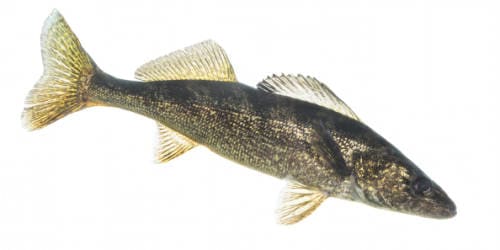
The Walleye (Sander vitreus) is a freshwater predatory fish found throughout North America. Walleye are known for having beautiful colors, depending on their location. Some are emerald and silver, whereas others are dark green and olive. The darker variations are often confused with sauger because they’re nearly identical.
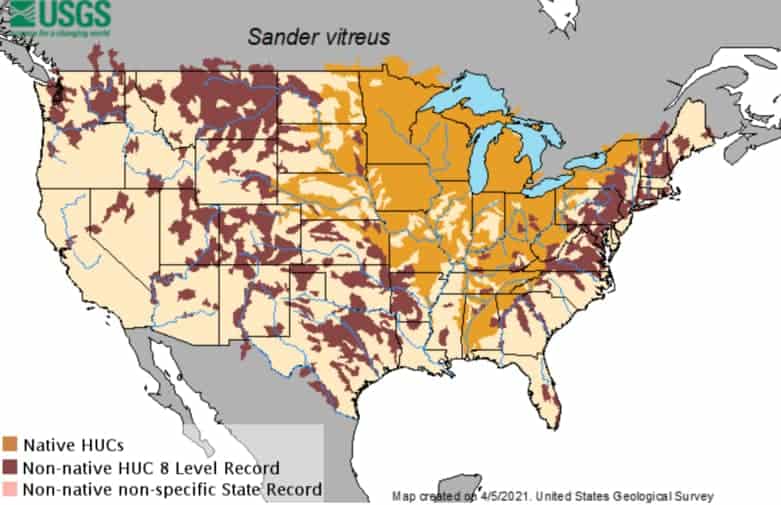
The walleye gets its unique name because of its forward-pointing eyes that seem like it’s looking at a wall or structure. Their eyes are perfect for seeing prey, such as Yellow Perch at the bottom of the water, providing clear vision at the lowest depths. During warmer seasons, walleye tend to swim deeper since the water isn’t as cold.
Walleye are highly prized by anglers for both their sporting qualities (long powerful runs), and excellent table fare. Some would argue that fresh walleye cheek is the best cut of fish in North America!
What Is a Sauger?
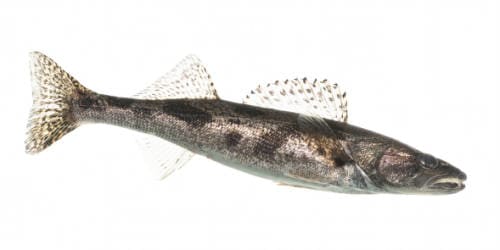
The Sauger (Sander canadensis) is a freshwater fish also found throughout North America, although not as widely distributed as its cousin the Walleye. Their similar appearance shows a dorsal fin, pointed tail, brownish-green colors, and a slender body. They’re known for swimming quickly through the water thanks to their pointed body shape.
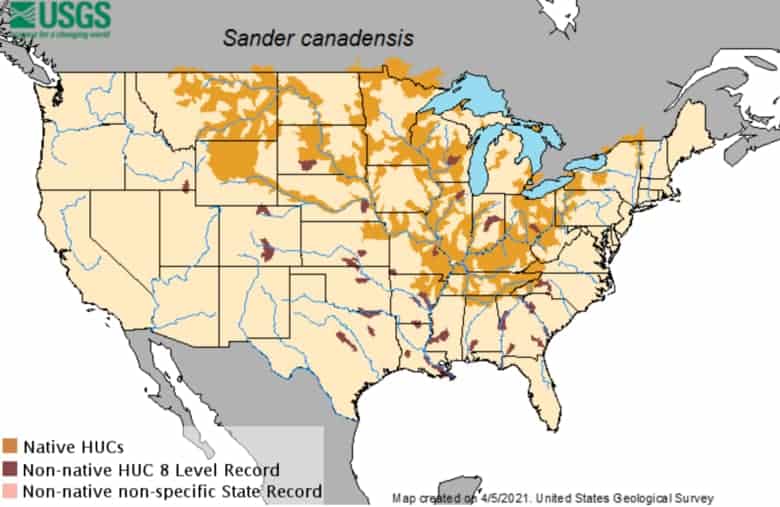
Saugers are much more likely to be found in a river, unlike walleye (they’re prone to living in lakes). However, their migratory lifestyle often brings them to lakes when moving to a nearby river. Thanks to their river-swimming habits, sauger are great at swimming against the current and navigating rough water.
Although they do not get as large as walleye, the sauger is a fun and delicious fish in itself. Around the Great Lakes region especially, sauger are highly prized.
How to Tell the Difference
Whether you recently caught one of these fish or want to know what to look for when fishing, you’ll be delighted to know there are several differences. After reading the list below, you’ll no longer question which fish you’ve caught. These fish might look similar, but they’re far from the same type.
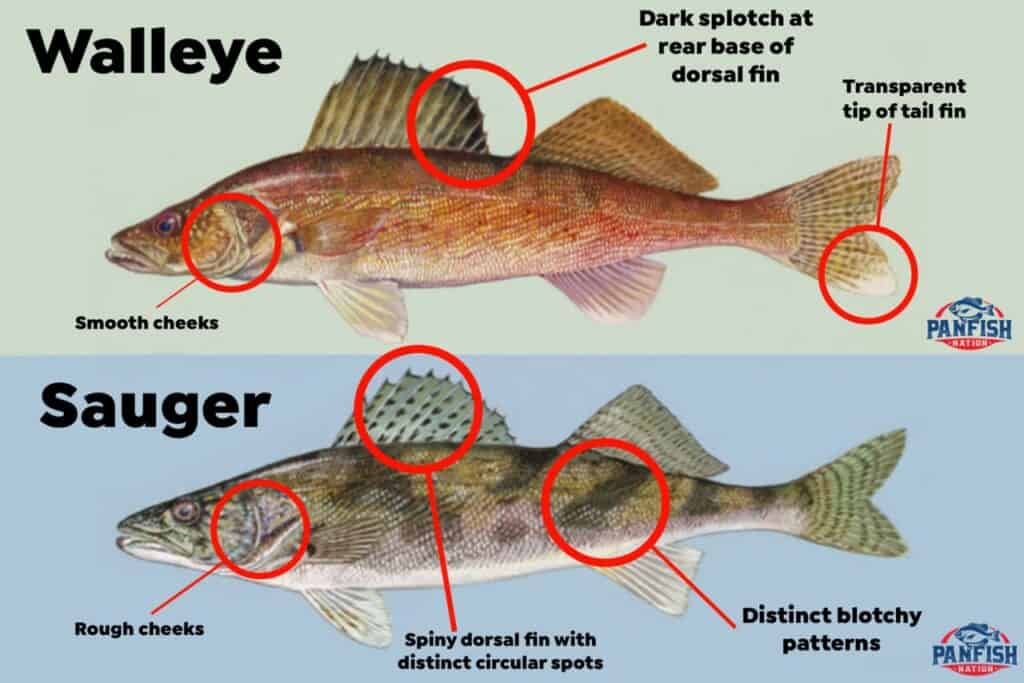
Without further ado, here’s a list of six differences between sauger and walleye:
- Walleye have a solid black splotch on their dorsal fin, but saugers have a speckled dorsal fin. Walleye have a distinct block color near the end of their dorsal fin (the fin on top of their body). A sauger doesn’t have this splotch because the whole fin is dotted with brown or green spots.
- Saugers typically live in rivers, so that might make things clearer. If you’re confused between these fish, think about where you caught them. If you’re fishing in a river, you likely caught a sauger. If you’re fishing in a lake, it’s probably a walleye. However, you can use some of the defining characteristics if you’re having a tough time.
- Walleye’s tails become transparent near the tips, whereas sauger tails are uniform from end to end. Look at the fish’s tail to know what you’ve caught. This feature is one of the easiest ways to know the difference between a sauger and a walleye. If there’s a clear or whitish color near the end, it’s probably a walleye.
- Walleye grow much larger than a sauger, so you’ll recognize their plump bodies compared to a small sauger. Saugers don’t get too big compared to walleye. In fact, walleye can get quite large. We’ll cover the size differences in the following subheading to dive deeper into the details.
- Saugers are usually spotted and blotchy, but walleye have fewer patterns. Some walleye only have one or two colors. You’ll notice these fish have a white belly and a solid top (in some cases), while saugers are almost always splotched with brown or green dots without any patterns.
- The cheek scales on a Walleye are smooth, and the cheek scales on a Sauger are rough.
As you can see, it’s relatively easy to know the difference between these fish. It might not be simple at first glance, but an in-depth inspection will reveal everything you need to know.
If you want to view a video breakdown of the differences, check out this YouTube video by Bobcrappies:
What is the Size Difference?
Both fish grow to the average size of other lake and river fish. They don’t get massive, but there’s no doubt walleye can double the size of a sauger. This factor can be all you need to know to tell the difference if you catch a full-sized walleye. Let’s review the length and weight of each fish below.
Sauger vs Walleye: Length
The US Fish and Wildlife Service estimates the average walleye is about 22.3 inches long, but they can grow over 40 inches. Saugers typically stop growing at 15 inches, so they’re much smaller than full-grown walleye. The confusing identification process usually takes place when their sizes overlap.
Sauger vs Walleye: Weight
Saugers often weigh up to three or four pounds, so it’s uncommon for them to be considered big fish. Walleye can grow up to 20 pounds if they’re full-grown, but they’re often between 6 to 15 pounds. As you could imagine, weight can be a determining factor when differentiating these two fish.
Saugers are much smaller than walleye in length and weight. However, it’s challenging to know which is which when they’re growing. If you catch a small walleye and a large sauger, they look almost the same. When this problem happens, return to the previously mentioned physical characteristics to identify the fish.
The world record Walleye weighed 25 lbs, and was caught in old hickory lake Tenneessee on August 2nd 1960.
The world record Sauger weighed 8 lbs, 12 oz and was caught in Lake Sakakawea, North Dakota on October 6th 1971.
Sauger vs Walleye Taste
Another reason walleye and sauger are similar is their taste. They’re both semi-sweet with a deliciously flaky texture. Walleye and sauger taste like most mild white meat freshwater fish, but you can season them with lemon pepper and salt for a bold flavor. Try one of our easy panfish recipes on a sauger or walleye, you won’t be disappointed!
According to Midwest Outdoors, sauger tastes slightly sweeter than walleye, though it’s up for debate. Sauger is generally tougher than walleye, which may or may not suit your taste preferences. When you’re choosing either of these fish, it’s important to expect similar flavors. Consider eating them side-by-side to decide which you like more.
Both fish are considered excellent table fare, and they can be prepared fried, grilled, baked or even smoked. Always check with your state’s fishing regulations to determine size and season requirements.
Conclusion
Now that you know the primary differences between sauger and walleye, you’ll be able to bait, catch, and cook them accordingly. Both offer a unique experience, so why not catch each? Keep in mind they have similar environments but are often exclusive in specific locations.
If you haven’t guessed yet, I love fishing and everything about it!
To learn more about why I started Panfish Nation, visit the About page and follow along on Social Media:


Download a copy of my FREE Lure Color Selection Chart & Knot Guide!
Stay up to date with fishing reports, tackle reviews, industry news, and much more! We respect your privacy, unsubscribe at any time.
Additional Reading
- Crazy Facts About the World Record Crappie

- What Size Hooks for Smallmouth Bass? Quick Guide

- Large and in Charge-Mouth: 10 of the Best Bass Lures of All Time (And Where to Buy Them)

- Emperor of the Sun(fish): What You Need to Know About the World Record Bluegill
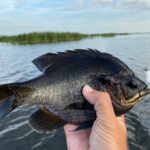
- The Seven Best Lures for Fall Bass Fishing
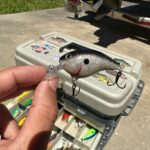
- Which Fishing Line is Best for Bass Fishing With A Spinning Reel?

